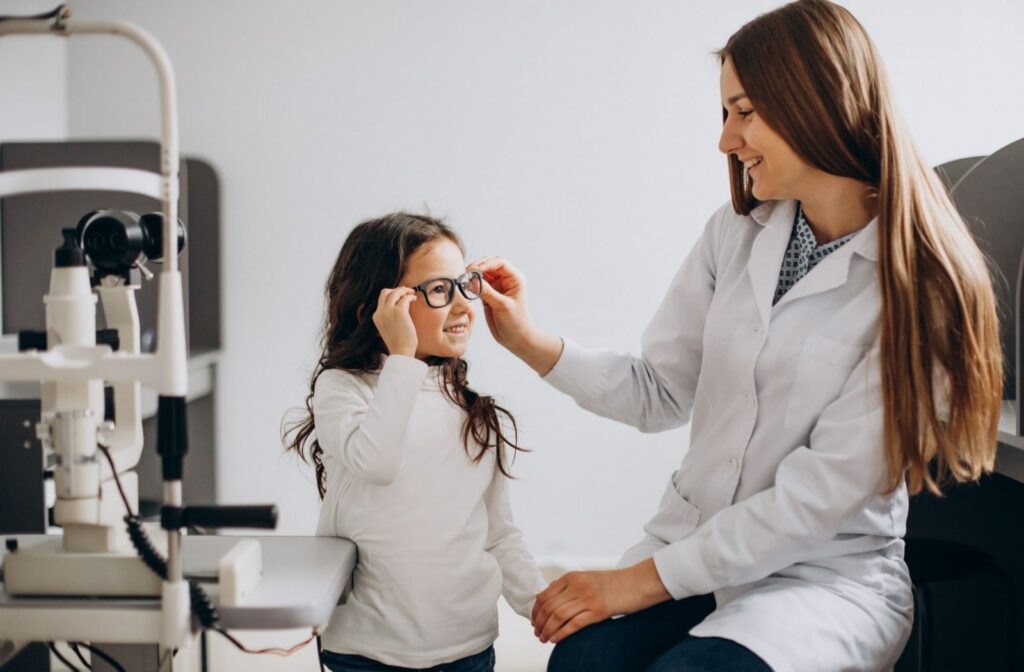Vision is a precious gift, yet many of us find ourselves facing the challenges of myopia sooner than expected. People often wonder: can myopia be cured? While a complete cure isn’t currently available, there are many ways to manage myopia effectively.
Myopia means experiencing blurred vision when looking at distant objects and affects many people worldwide. It’s influenced by genetics and factors like urban living and prolonged close-up work with the eyes.
Through advancements in eye care technology and innovative treatments, managing myopia has become more effective, especially in younger patients. By understanding lifestyle factors and adopting appropriate strategies, we can effectively navigate myopia management.
Understanding Myopia
Myopia occurs when light entering the eye focuses in front of the retina instead of directly on it, leading to blurry vision for distant objects. This refractive error is attributed to either an elongated shape of the eyeball or an excessively curved cornea.
The elongation of the eye’s axial length and changes in the curvature of the cornea disrupt the normal process of light refraction, resulting in the inability to focus on distant objects sharply.
A high degree of myopia not only causes blurry distance vision but also increases the risk of serious, sight-threatening eye diseases such as:
- Glaucoma
- Cataracts
- Retinal eye diseases
When Does Myopia Start?
Myopia often manifests during childhood, particularly in the school-age years. Children’s eyes undergo rapid changes. Initially, babies have short eyes and poor eyesight.
As they grow, their eyes lengthen until they reach the expected size, signalling normal vision. However, if their eyes keep growing, they may become nearsighted.
Eye growth accelerates in early childhood but slows during adolescence, coinciding with overall physical growth.
How Genetics Plays a Role
Genetic predisposition also plays a role in the development of myopia, with people having a family history of the condition being more susceptible.
Lifestyle
The prevalence of myopia has surged in recent years, along with technological advancements and changes in lifestyle habits.
Prolonged near work, such as reading, computer use, and prolonged screen time, has been associated with a higher risk of developing myopia, especially in children and adolescents.
Additionally, reduced outdoor time and exposure to natural light may further exacerbate the progression of myopia.
Symptoms
Symptoms of myopia include:
- Blurry or hazy vision when looking at faraway objects
- Squinting to read
- Frequent headaches
- Poor vision in low light
Overall, myopia is a complex visual condition influenced by both genetic and environmental factors. Understanding its underlying mechanisms and risk factors is important for using effective prevention and management strategies.

How to Manage Myopia
While there’s no cure for myopia, there are ways to slow down its progression. These methods include:
- Using special contact lenses
- Using atropine eye drops
- Wearing prescription glasses
- Spending more time outdoors
The effectiveness of these methods can vary from person to person, and they should be used under the guidance of an eye care professional. Ongoing research is being conducted to explore new and improved strategies for managing myopia progression.
Specially Designed Contact Lenses
Some contact lenses are specifically designed to slow down myopia progression.
These lenses work by reshaping the cornea or exerting a controlled amount of pressure on the eye, which can help reduce the rate at which myopia worsens over time.
Orthokeratology, often referred to as ortho-k, is a method that uses specially designed rigid gas-permeable contact lenses to temporarily reshape the cornea and correct refractive errors.
Unlike traditional contact lenses, which are worn during the day and removed at night, ortho-k lenses are worn overnight while you sleep.
MiSight contact lenses are daily-disposable, dual-focus contact lenses that provide children with clear vision while signaling the eye to slow down its growth.
When compared to single-vision lenses, MiSight slowed myopia progression by 59%.
Atropine Eye Drops
Atropine eye drops are another option for managing myopia progression. These drops work by dilating the pupil and temporarily paralyzing the muscles that control the eye’s focusing ability.
By doing so, atropine can help slow down the elongation of the eyeball, which is a primary factor in myopia development.
Prescription Glasses
Prescription glasses can help correct the refractive error associated with myopia, but they don’t directly address the underlying cause of myopia progression.
More Time Outdoors
Spending more time outdoors has been associated with a reduced risk of myopia progression, especially in children.
Exposure to natural light and the visual stimuli present outdoors may help to regulate eye growth and development, potentially slowing down the progression of myopia.
Start Managing Myopia Today
Consistent eye check-ups and a solid eye care regimen are essential for your family’s eye health. If your child is dealing with myopia, don’t hesitate to reach out to our Advanced Eye Care Center team to book an appointment for an eye exam.
We’ll evaluate factors like your child’s age, maturity, and lifestyle to determine the best course of myopia management and when to start it.





